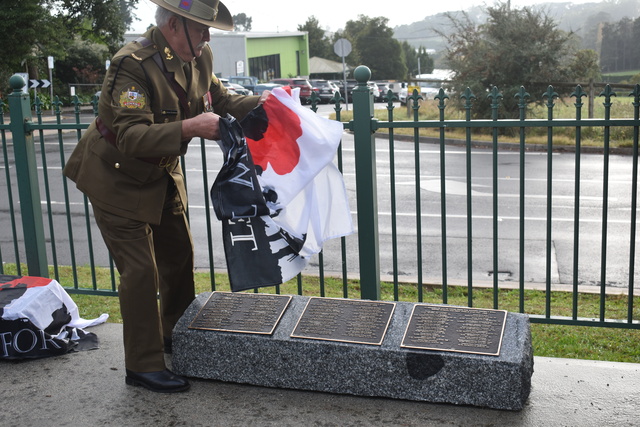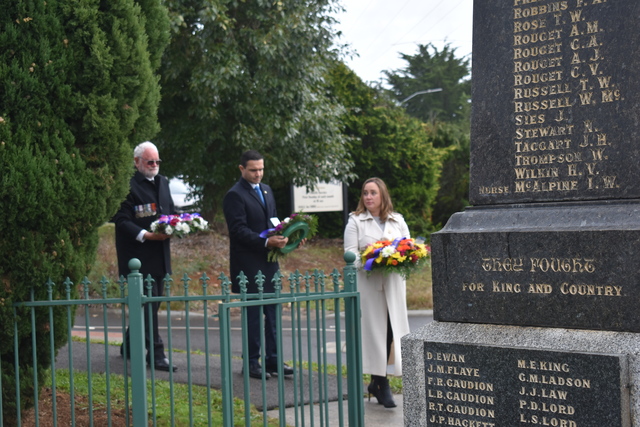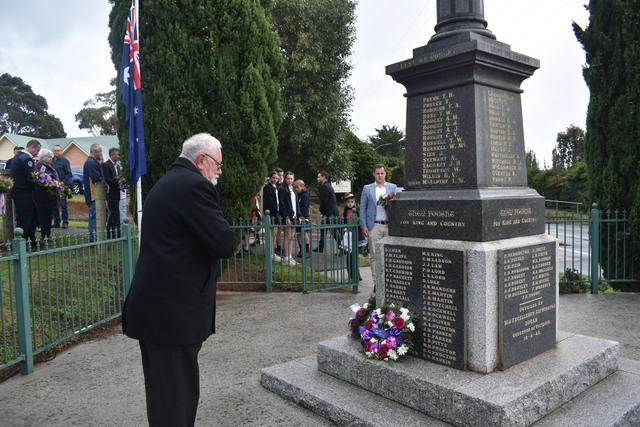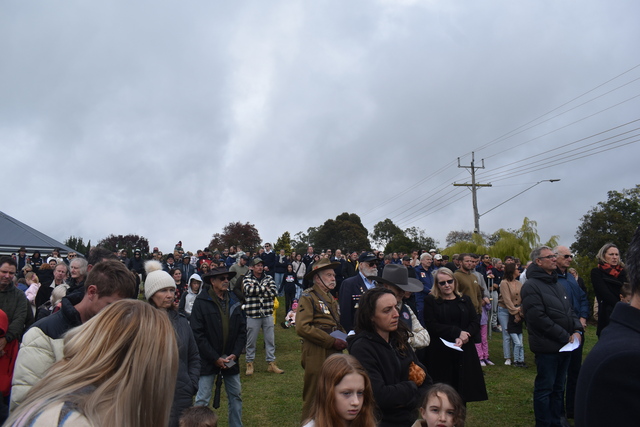
By Callum Ludwig
109 years on from the landing at Gallipoli, Wandin residents gathered to remember all of those who have served Australia, especially those who gave their lives doing so.
Anzac Day also marked an exciting new chapter in Wandin’s war history, even over a century later, as 44 names previously missing from the cenotaph were added on newly installed plaques.
Anthony McAleer OAM and Chris Manders were the ones to compile and proofread the missing names of Wandin residents and Mr McAleer said the story of the new plaques started a few years ago during the centenary of World War One commemorations.
“While researching the men and women of Wandin who served in this period and using recently released documents from the archives, I found quite a number of names of Wandin service people who weren’t in fact listed on the war memorial, 44 extra names in fact, including another six that had died while on active service,” he said.
“All of these extra veterans clearly had Wandin recorded in their official documents as their place of birth or residence, in fact it became easier to prove their connection to Wandin than it was with some of those already listed on the memorial many of whom had no mention of Wandin in their files,”
“In the early 1920s in this area, communication was limited, it was a society that had no internet, no television, no radio, no mobile phones, in fact very few phones of any sort in the distric, only a couple of cars and no access to official files or documents, they relied heavily on word of mouth.”
The new plaques, completed with state government funding sourced by the Rotary Club of Wandin, were officially unveiled by Seville resident and Warrant Officer Class One Michael Hutchinson of the 22nd Engineer Regiment of the Royal Australian Engineers.
Mr McAleer said there were numerous incidences of local servicemen who had lived all their lives in Wandin and then moved out of the area before 1914 when the war started.
“Unless they were in contact with someone living here physically or via correspondence, no one in Wandin would know if these people had enlisted or not,” he said.
“At the same time, we decided to right another wrong that existed with this current war memorial, as at the time it was made it was commonplace just to list the person’s surname and initial, because everyone at the time knew who that person was,”
“100 years later however and very few people now know who the names are referring to and there is scant information that personalises the name…so it was decided if we’re going to add the new names to the memorial let’s also include more information on the individuals as well, to the new names and those already listed.”
The new plaques now include the full name, rank, number, unit served with and years served for all Wandin servicepeople, and for those that died while on active service, the date the died, where they are buried and their age at the time of their death is also included.
Anzac Day addresses were given by Casey MP Aaron Violi, Evelyn MP Bridget Vallence and Chandler Ward Yarra Ranges councillor David Eastham.
Mr Violi’s address included reading out the winning submission from Don Parsons Memorial Anzac Creative Writing Piece competition he held, which came from Wandin North Primary School student Kaylee and called ‘War Memorials.’
“Respect is shown on a special day, respect is shown in a special place, in the one minute of silence there is nothing to say, in the war memorial where we see our soldiers face, here it explains how they fought in the war, some are now put where no one can ignore,” Mr Violi read.
“They all made a big sacrifice, but some had to pay a heavy price, as you wake up at dawn to come to this place, you lay the wreath down and look at their face,”
“A war memorial is about recognition, it also puts us in a good position, graffiti and spray paint are my worst fear, so come a little closer up and listen here, I’m a war memorial, strong and tall some pay respect and some not at all.”
Kaylee’s poem impressed the attendees of the service.
Ms Vallence told the story of 18-year-old Harold Hunter in her address.
“Harold Hunter was 18 when he enlisted, would go on to distinguish himself at the Battle of Bullecourt in France. During the battle, while under heavy machine gunfire, Harold continued to lay and repair communication lines, so important to the war effort and captured various positions,” she said.
“His work was described as ‘practically continuous and most valuable’ and for his ‘conspicuous gallantry’, he was awarded the Military Medal,”
“Harold was one of the fortunate ones, he got to come home, Australia lost 7000 lives during this particular battle and today we hold this service adjacent to the road, Hunter Road, that was named after him and his family.”
Students from the Wandin North (Chase, Claudia, Harry and Harper) and Wandin Yallock (Asha, Kai and Axel) Primary Schools also each read a poem and laid a wreath during the service.
Mr Eastham said on days like Anzac Day, we need to remember more than just some initials on a plaque.
“Each person who took up arms and took part was a person with family and friends. They had a history, a community back home that they were part of, they might have played in a local footy team, been a local tradie or a butcher, they had hopes and dreams, things that they’d achieved and things that they still wanted to do,” he said.
“Many had partners back home waiting for them and many had friends fighting alongside them and when we talk about the thousands of losses during this campaign, it’s important that we never forget that each and every single loss, every fallen soldier, every service person who never made it home was a human who had a story just like every single one of us standing here today.”









